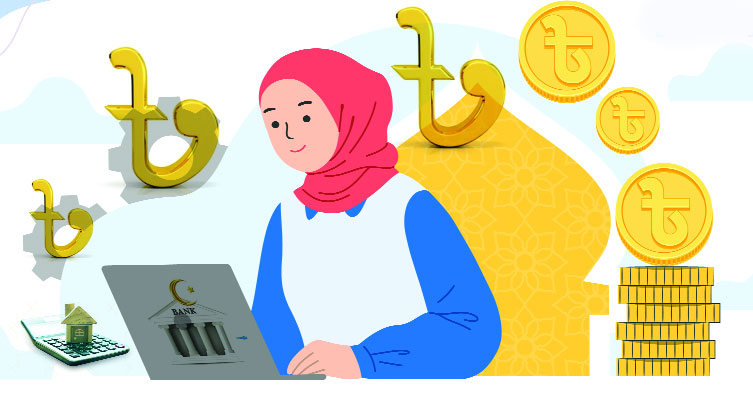Islamic banks become strong rivals of conventional banks
Enayet Karim: The extent of Islamic banking in the country is gradually increasing. In the past two and a half decades, Islamic banks have become strong rivals to state-owned commercial and private conventional banks in terms of deposit collection, lending and rendering other banking and financial services.
The journey of Islamic banking began at the beginning of the eighties of the last century at the religious crossroads in Bangladesh, where more than ninety percent of Muslims live. The first bank of this type “Islami Bank Bangladesh” started its operations in 1983. At present, the number of Islamic banks in the country is 7. Apart from this, various commercial banks have opened their own separate Shariah-based branches.
Bangladesh Bank’s data review shows that at the very end of the nineties of the last century, the amount of deposits and the number of depositors and the amount of loan disbursement and the number and rate of borrowers in Islamic banks gradually increased. Islamic banks have been accounted for in a separate category since 2000 in various publications and statistics of Bangladesh Bank. That is, it can be said that the real expansion of Islamic banking in the country has started since that time. Statistics show that in the year 2000, the total amount of deposits in the state-owned and private commercial banks of the country was Tk 42,586 crores (55.22% of the total deposits in the banking sector) and Tk 19,589 crores (25.40% of the total deposits in the banking sector) respectively. In the same year, total deposits in Islamic banks were Tk 4,687 crore (6.07% of total deposits in the banking sector).
In the following years, the amount of deposits in the state-owned commercial banks increased, but overall, the rate of deposits gradually decreased compared to the total deposits in the banking sector. On the other hand, the amount and rate of deposits in private commercial banks and Islamic banks continued to increase.
In this context, at the end of June 2023, the total amount of deposits in the state-owned and private commercial banks of the country stood at Tk 4 lakh 30 thousand 176 crores (25.50% of the total deposits in the bank sector) and Tk 7 lakh 63 thousand 980 crores (45.00% of the total deposits in the bank sector) respectively.). At the same time, the total amount of deposits in Islamic banks stood at Tk 3 lakh 68 thousand 251 crores (this is 21.83% of the total deposits in the banking sector). In other words, in less than two and a half decades, the rate of deposits in the country’s Islamic banks has increased by 15 percent.
Similarly, the number and rate of depositors in Islamic banks have also increased over time. In the year 2000, the total number of depositors in Islamic banks was 13 lakh 84 thousand 152 people (4.78% of the total depositors in the banking sector). At the end of June 2023, the total number of depositors in Islamic banks stood at 3 crore 3 lakh 49 thousand 360 people (this is 20.79% of the total depositors in the banking sector). That is, in less than two and a half decades, the rate of depositors in the country’s Islamic banks has increased by 16 percent.
Meanwhile, the participation of Islamic banks in loan disbursement as well as deposit collection has increased. In the year 2000, the total amount of disbursement of loans by state-owned and private commercial banks was Tk 29,795 crores (47.16% of the total disbursed loans in the banking sector) and Tk 15,371 crores (24.33% of the total disbursed loans in the banking sector) respectively. In the same year, the total disbursed credit of Islamic banks was Tk 4,297 crore (6.8% of the total disbursed credit in the banking sector).
At the end of June 2023, the total amount of disbursed loans and advances of Islamic banks stood at Tk 3 lakh 84 thousand 61 crores (this is 26.56% of the total disbursed loans in the banking sector). In other words, in less than two and a half decades, the loan disbursement rate of the country’s Islamic banks has increased by almost 20 percent.
On the other hand, in the year 2000, the total number of borrowers in Islamic banks was 1 lakh 27 thousand 427 people (this is 1.81% of the total borrowers in the banking sector). At the end of June 2023, the total number of borrowers in Islamic banks stood at 19 lakh 9 thousand 566 (this is 15.35% of the total borrowers in the banking sector). In other words, in less than two and a half decades, the rate of borrowers in the country’s Islamic banks has increased by 13.5 percent.
Rare Israeli airstrike in Beirut kills Hezbollah commander and more than a dozen others
International Desk: Israel launched a rare airstrike that killed a senior Hezbollah milita…








